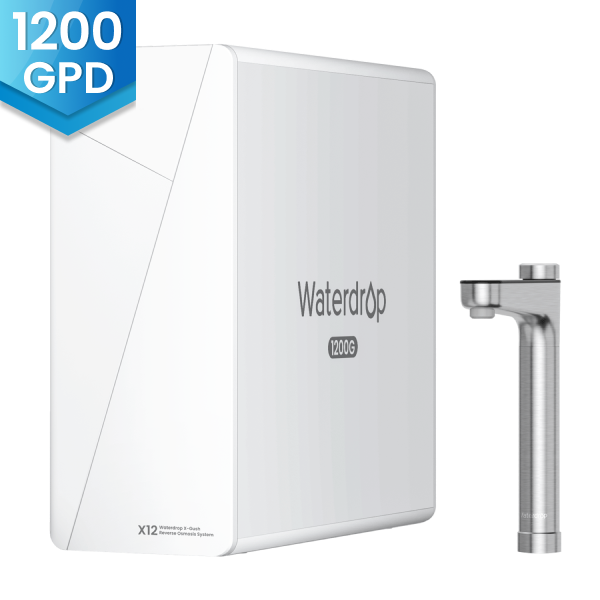What Is Net Zero?
por Dr. Jonathan Doyle - Updated August 19, 2022
Earth and the life on it depend on the environment for its health. Earth is the home of all life, we rely on the environment for all our needs, including food, water, and air. Consequently, protecting the environment is everyone’s business.
The term “net zero” is quite popular regarding environmental protection, but you may have wondered what it means. And why is it so important? Fortunately, this blog discusses net zero in detail. So, kindly read further to learn about this new concept.
What Is Net Zero?
Net-zero refers to reducing greenhouse gas emissions to zero. These emissions cause global warming, and the aim is to balance the amount of gases released into the atmosphere with the amount that carbon sinks remove and store.
In other words, the term means cutting greenhouse gas emissions as close to zero as possible while the oceans and forests re-absorb any remaining emissions from the atmosphere. Reaching net zero is relatively easy if the amount of gases added is not more than the amount removed.
The term “net” is essential because reducing all emissions to zero is quite tricky. In addition to deep and widespread emission cuts, scaling up removals is necessary. Furthermore, for net zero to be effective, all greenhouse gas removals mustn’t leak into the atmosphere over time.

The Difference Between Net Zero and Carbon Neutrality
Net zero is the amount of removed greenhouse gases from the atmosphere equal to the amount of gases emitted by humans. On the other hand, carbon neutrality refers to the amount of carbon removed from the atmosphere is equal to the amount of carbon emitted. Carbon neutrality is much narrower than net zero because it focuses on carbon removal.
Although on a much-expanded scale, net zero has a similar principle to carbon neutrality. To achieve net zero, you have to go beyond removing just carbon emissions. Generally, net zero refers to all greenhouse gases emitted into the atmosphere. These gases include methane, hydrofluorocarbons, and nitrous oxide.
Like carbon neutrality, the amount of emitted greenhouse gases into the atmosphere must be equivalent to the removed greenhouse gases to reach net zero.
Although there are global actions to reach net zero, it requires collaboration 0f countries worldwide. In addition, research has shown that carbon neutrality is much better in the long run.
Check to learn more about carbon neutrality.
About Climate Change
Based on evidence, it has been proven that the Earth is getting increasingly hotter. Earth’s temperature has risen by 0.14° Fahrenheit (0.08° Celsius) per decade since 1880. Although this value doesn’t sound like a lot, it is incremental warming with many negative impacts.
Humans can feel the negative influences of climate change even with a slight temperature rise. These effects include heatwaves, severe storms, floods, rising sea levels, and ice loss. And as global warming intensifies, its effects can only get worse.

The high level of emitted greenhouse gases into the atmosphere is the primary trigger for climate change. Carbon dioxide and methane are the most popular greenhouse gases. And CO2 is the most abundant and dangerous of greenhouse gases. Consequently, cutting carbon emissions and footprints or looking for lower-carbon alternatives are great for addressing climate change.
Global warming is directly proportional to cumulative CO2 emissions. Therefore, as long as global emissions exceed zero, the planet will keep heating. Thus, climate damages, including heating, are escalating and will continue to so as the emissions continue.
What are The Effects of Climate Change
Climate change affects human beings and the environment; it destabilizes Earth’s temperature equilibrium, having far-reaching effects on the environment and humans. There is even a distinction between climate change’s direct and indirect effects.
Furthermore, global warming affects and changes the energy balance and temperature of the Earth. This is because there is an increasing concentration of greenhouse gases, which significantly impact humans and the environment.
Bottled Water VS. Filtered Water
The rate at which people buy water bottles worldwide is quite alarming. Unfortunately, plastic bottles are usually not recycled. Many plastic bottles end up in landfills or the ocean. Urgent action is, therefore, necessary to stop this plastic pollution worldwide.
The Impacts of Plastic Pollution
It is well-known that plastic pollution has a deadly effect on wildlife. There are thousands of sea turtles, seabirds, seals and other marine animals are killed because of ingesting plastic or getting entangled in it.

Another significant impact of plastic on the environment is that it may take hundreds of years to decompose. Besides, some toxic substances can be released into the soil and underground water when plastic bottles and bags perish under sunlight. Plastic products can also cause air pollution if they are burned. The toxic substances produced during burning are extremely harmful.
Why Should You Drink Filtered Water?
Filtered water is much fresher than bottled water. It is also safer and eco-friendly. The Waterdrop RO system is compact, taking up little space under the sink. Operating this system is also straightforward. The system has a stable water supply and removes water impurities, including bacteria, calcium, magnesium, organic matter, and inorganic matter. The system also removes radioactive substances and metal ions. Consequently, you get to enjoy sweet and crystal-clear water.
Conclusion
Net zero is a balance that will happen if the amount of carbon released into the atmosphere is not more than the amount removed. Transport, agriculture, and industry will have to be cut to reach net zero emission.
It is the best way to tackle climate change because it aims at reducing global warming. In the next decade, the best approach is to limit emissions. This act is critical to the future. Therefore, all countries, sectors, industries, and everyone has to work collectively to cut down the carbon we produce.
Contaminants Detected in Fruitland Water Special Service District
30
Contaminants
EXCEED EWG HEALTH GUIDELINES
EXCEED EWG HEALTH GUIDELINES
30 Total Contaminants in Your Water
Water Provider
Fruitland Water Special Service DistrictPopulation Affected
120,000Water Source
Ground waterExceeds Guidelines
Others Detected














